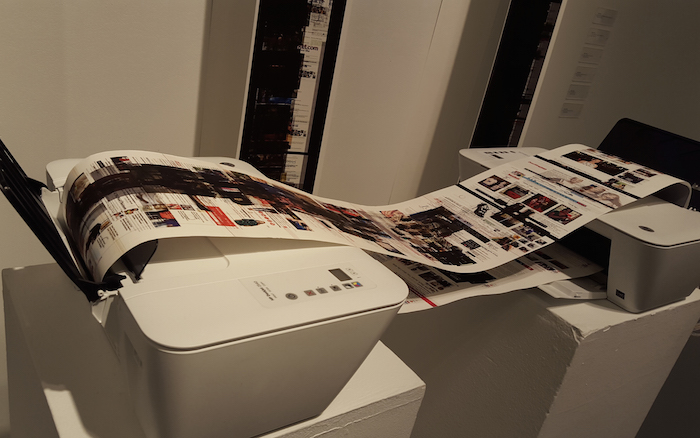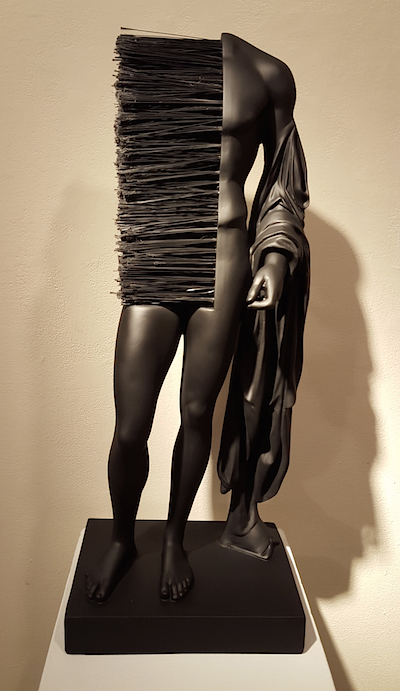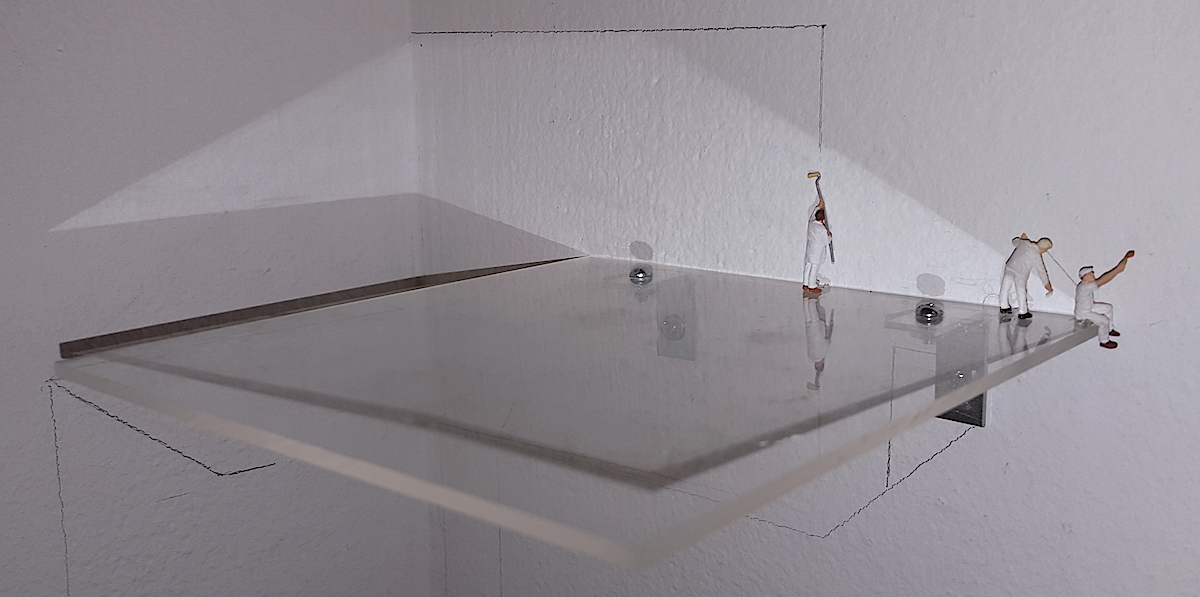The Sondheim Semifinalists Exhibition at MICA
By Rowan Fulton
Perhaps you’ve stopped by the BMA to check out this year’s Sondheim finalist exhibition, which is an excellent survey of the top artists in the region. However, if you have not been to Artscape or the galleries at MICA, there is certainly something to be said for the smart and talented individuals involved in the semi-finalist show, who manage to pack a punch with considerably less space, and while activating a much more public (after all, the show opens in conjunction with Artscape) setting.
In a crowded show like this, which features a broad range of styles and interests (but leans towards abstract painting and installation this year), the works which draw the most viewer attention are the biggest and flashiest. The most interesting of these are easily Quentin Moseley’s pre-historically inspired neon paintings, which beautifully hold the window space outside of Decker-Meyerhoff Gallery (particularly at night) and Samantha Rausch’s “Blood Knot”, a simultaneously absurd and imposing structure which towers over a seated viewer in a series of winding, furry red tubes.



Others opted for subtlety, and I found myself lingering for a while in front of Timothy Makepeace’s “Coal Terminal Positive” and “Coal Terminal Negative”, a simple yet lovely diptych of large-scale, delicate and photographically-influenced charcoal drawings which perfectly mirror the image of a still and quiet industrial space.


As paintings are concerned, I was drawn to J.T. Kirkland and Erin Curtis’s work, for their very different treatment of surface. Kirkland’s artist-framed hexagonal painted panels allow paint to push back into the surface, selectively revealing the wood grain as layers are sanded away. Although his row of black and brightly colored panels create a pleasing quartet of friendly shapes, I am most interested in the creamy white “Subspace 165”, which employs muted color to highlight the wood texture and subtle tonal relationships.

On the other side of the Meyerhoff gallery, Erin Curtis’s paintings offer a different approach to texture, building surface layers with acrylic paint and collaged canvas elements to inventively scatter vibrant color in a manner which is reminiscent of Glitch Art. In Decker, Danielle Mysliwiec’s intricate surfaces inventively weave together tiny scraps of oil paint to generate autonomous topographies, while Katherine Mann’s large-scale mixed media works on paper create elusive spaces straddling interior and exterior logic through optical layering.



A few artists also played with the absurd, among them Nancy Daly, whose print-saturated loops of printer paper address the over-saturation of web content, and Keith Bentley, whose combined broom and contrapposto figure sculpture subverts expectations regarding the bland functionality of household objects and classical ideals about art as non-utilitarian.


Occupying a corner of the gallery, Leah Cooper’s installation of tiny architectural figurines, mounted plexiglass supports, and hand drawn elements, playfully documents shadows and light patterns on the gallery wall, while suggesting the potential for tiny worlds present when observing the intricacies of a space.
Although the Sondheim Semifinalists show is broad and disjointed at times, certain qualities unite the staggering group of 54 artists involved. Generally, the works featured are bright, poppy, and whimsical. Abstraction leans toward the colorful and cartoony rather than the hard-edged and severe, and sculptures tend toward the soft and playful. It is worth mentioning that the show on the whole is family-friendly, and in fact, the colorful wall installations, large-scale sculptures, and even a short claymation film (by Ru Kawahata and Max Porter) have wide accessibility and appeal to younger viewers. If you missed the show during Artscape, be sure to check it out at the Decker-Meyerhoff Gallery at MICA before it closes on August 2nd!
Author Rowan Fulton is a Baltimore-based painter and writer.





